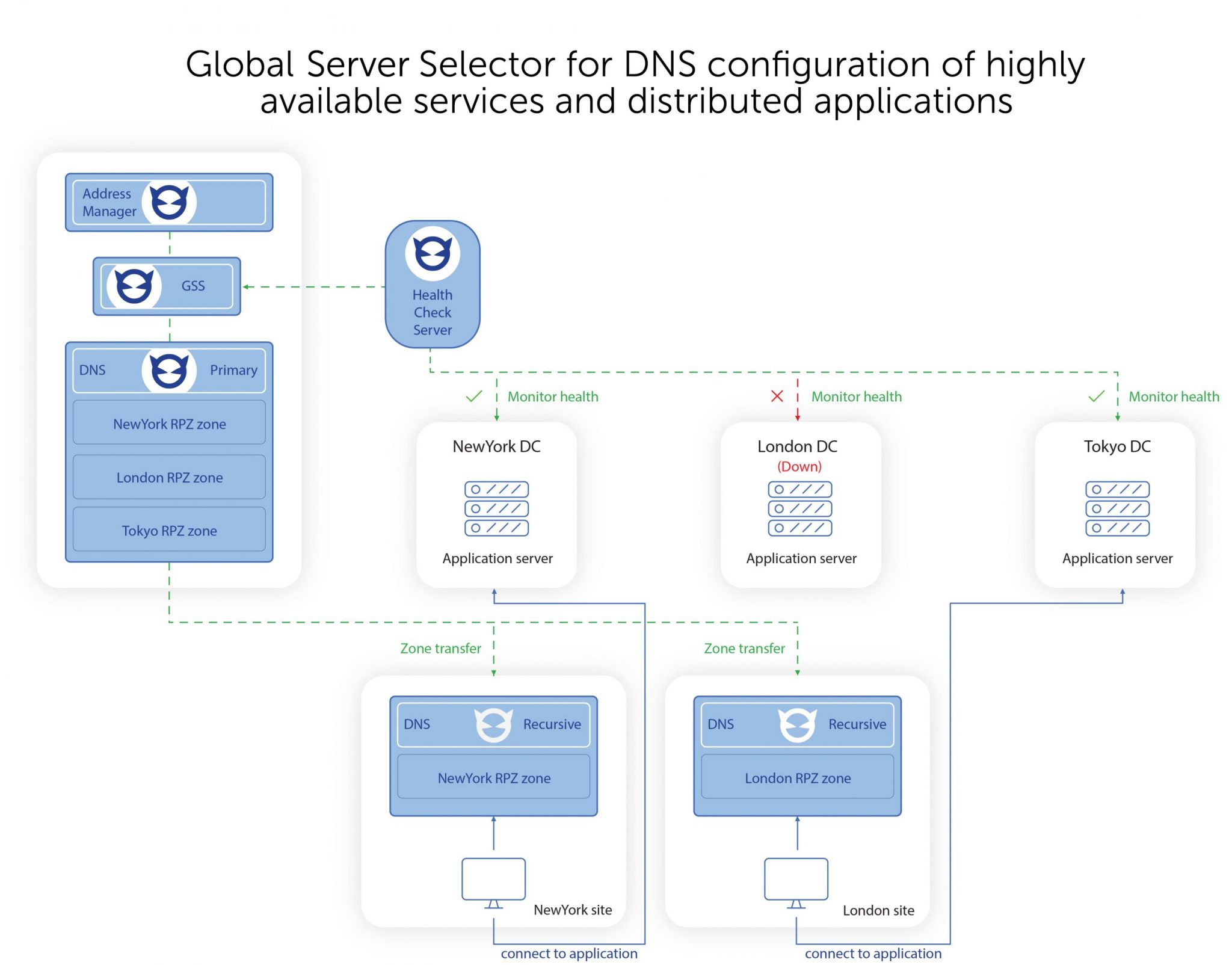A simple replacement for complicated GSLB
BlueCat’s Global Server Selector makes it easy to deliver highly available services and distributed applications, without increased network complexity.

Could there be an easier alternative to GSLB?
As global organizations expand from the data center to hybrid cloud, optimally connecting endpoints to distributed business applications becomes more complex. Clients connect to these distributed applications through a single name, but they must be routed to different servers depending on the location of the client and the availability of the servers. For example, Tokyo users get routed to the Tokyo application server, unless it is down. In that case, Tokyo users get routed to another server somewhere else.
Taming GSLB complexity
In the past, this meant increasing network architecture complexity with third-party global server load balancing (GSLB) solutions, custom integrations, and duplicated DNS data. Unfortunately, these approaches require complex maintenance and troubleshooting.
Network teams are looking for a simple way to connect endpoints to the closest healthy server. Such a solution must tame network complexity by:
- Being user-friendly and providing centralized control
- Seamlessly integrating with existing health monitoring applications
- Eliminating the need to maintain a map of IP addresses by region
There is a simpler way: Global Server Selector
BlueCat Global Server Selector (GSS) provides easy configuration of DNS for highly available services and distributed applications. Furthermore, it provides automatic updates of DNS authoritative data when the health of a server changes. Updating the DNS authority decouples health monitoring from DNS resolution. This reduces the cost and complexity of establishing connections between network and application services.

In order to fully implement BlueCat GSS, network teams must associate every DNS server with a client region. That means no longer using the traditional approach of basing the response on the IP address of the client’s DNS server. BlueCat GSS offers a simpler solution for network teams to direct application traffic. Now, DNS will always connect endpoints to the closest healthy application servers.
Here’s a quick demo of Global Server Selector:
Thanks to BlueCat GSS’s simple administration, network teams can easily address the requirements of highly available distributed apps and services. This eliminates the cost and complexity of traditional GSLB solutions.
Ready to get started? To learn more, download the GSS datasheet or review our GSS guide for BlueCat customers (available in Customer Care).





